CROSS KNIT LOOPING

Triple cross knit looping along the top edge of a woven tote bag and an example worked flat in the background.
Cross knit looping is one of many decorative finishes used on weavings here in South America. Here in Bolivia, it is used to join and cover the edges of certain woven pieces, such as chuspas. It completely wraps around the edge and so can be used to hide a less than perfect selvedge or, by working it in a completely contrasting yarn color, it can add more life and interest to a piece. I have used it purely as decoration, to edge a knitted vest where I chose not to use ribbing, to stabilize the flap of a woven shoulder bag where the corners had a tendency to curl and to reinforce the top edge of a woven tote bag.
This tutorial is for triple cross knit looping as taught to me by Hilda in Potosi.
I suggest learning this technique by working it flat rather than on an edge and I further recommend practicing it on card rather than fabric to start out.
I tried doing it with my thickest mercerized cotton but once the “stitches” were photographed up close , all clarity was lost under the fluffiness of the yarn. Yes, I know, you wouldn’t call mercerized cotton fluffy but believe me, in super macro view it is! So I have used a piece of leather instead-the kind that is sold to make necklaces and hope the steps will be clear for you using this medium.
All you need to get started is a piece of card, yarn and a sewing needle for your chosen yarn size. Choose a yarn that is smooth rather than hairy- this way it will be a lot easier to see the stitches while you are learning the technique.

LEFT: Triple cross knit looping worked flat on a piece of card. CENTER: A drawing showing the individual "stitches". RIGHT: The piece of card I used for this tutorial. I hope that WARP won't mind my having used their Member Directory cover. The green color photographed so well!
You can see above that there are three rows of little knit stitches – hence the name triple cross knit looping. When working this on an edge, one stitch will be on the upper surface of the fabric. The middle stitch will sit right on the edge and the third stitch will be on the lower surface of the fabric. I pre poked holes in the card before starting which I recommend doing. Of course, this is not necessary on fabric! The holes are three to four tenths of an inch apart.

STEP ONE: Sew three Xs as shown from top to bottom. Using 12wpi cotton and the leather, the length of the three Xs is eight tenths of an inch.When you have completed the bottom X, pass your yarn under the card and have it emerge next to the top X at the point indicated by the needle in the photo.

STEP TWO: Now we can start making loops. I have photographed this step and shown it in drawing form. Pass the needle with its yarn under the first X. The card is not pierced in this step. You are simply passing the yarn under the two X threads.

STEP THREE: Now we make the second loop. The photograph shows both loops from STEP TWO and THREE. The first loop has been omitted from the drawing for clarity. Pass your needle with its yarn up and under both threads of the second X. Once again, the card is not pierced in this step. We have made two loops.

STEP FOUR: We can now make the third and final loop. Only the third loop is shown in the drawing. All three loops can be seen in the photo. Pass your needle with its yarn up and under the two threads of the third X. Push the needle through the card as shown. It will emerge next to the first loop as indicated by the needle in the photo.

STEP FIVE: We have just finished making three loops but, as you can see in the photo, the crosses in the loops form a new set of Xs. The process now starts again. Pass your needle up and under the two threads of the first X. Continue forming loops on the Xs. The card is only pierced at the bottom and top of the work.

Triple cross knit looping in progress in 12 wpi merc cotton. See if you can discern the three Xs in the cotton yarn. Now if you can imagine this piece of card being folded horizontally through the center X, you will have an idea of how it will look on the edge of a piece of fabric.

Here it is on the folded cardboard. You can see that the middle row of stitches is sitting right on the edge.

Now it is clear that when you are working this on the edge of a piece of fabric, the needle is simply passing through the fabric when it travels from the bottom of the last X to the top of the first X.
A COUPLE OF TIPS.
The first time you try to work this on an edge, make sure you use a yarn color that contrasts with the fabric color or it will be almost impossible to see the X s and loops. Once you have more experience with the technique, you can try it with other yarn colors.
When your needle is under an X in the position shown in STEP FIVE, try to remember to drag it and the stitch sideways before pulling the yarn through. This helps to stretch the stitches across the fabric and stop them from bunching up together.
I will leave you here with the web address for WARP – Weave A Real Peace- which you may like to check out.
And, here is a photo showing triple cross knit looping that I used to edge a knitted vest and a woven bag. I hope you find this technique useful for your own projects.I have also seen it worked around the tops and bottoms of braids.
I used a single column of cross knit looping to edge these pieces that I made with traditional motifs of Vietnam. In this case you would only sew one “X” to start and go looping through that.
Let me know what you think and if you use it! 🙂






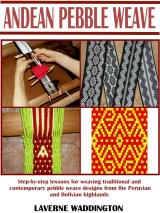
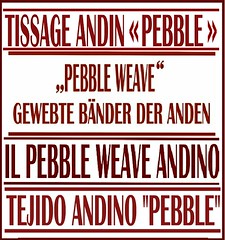
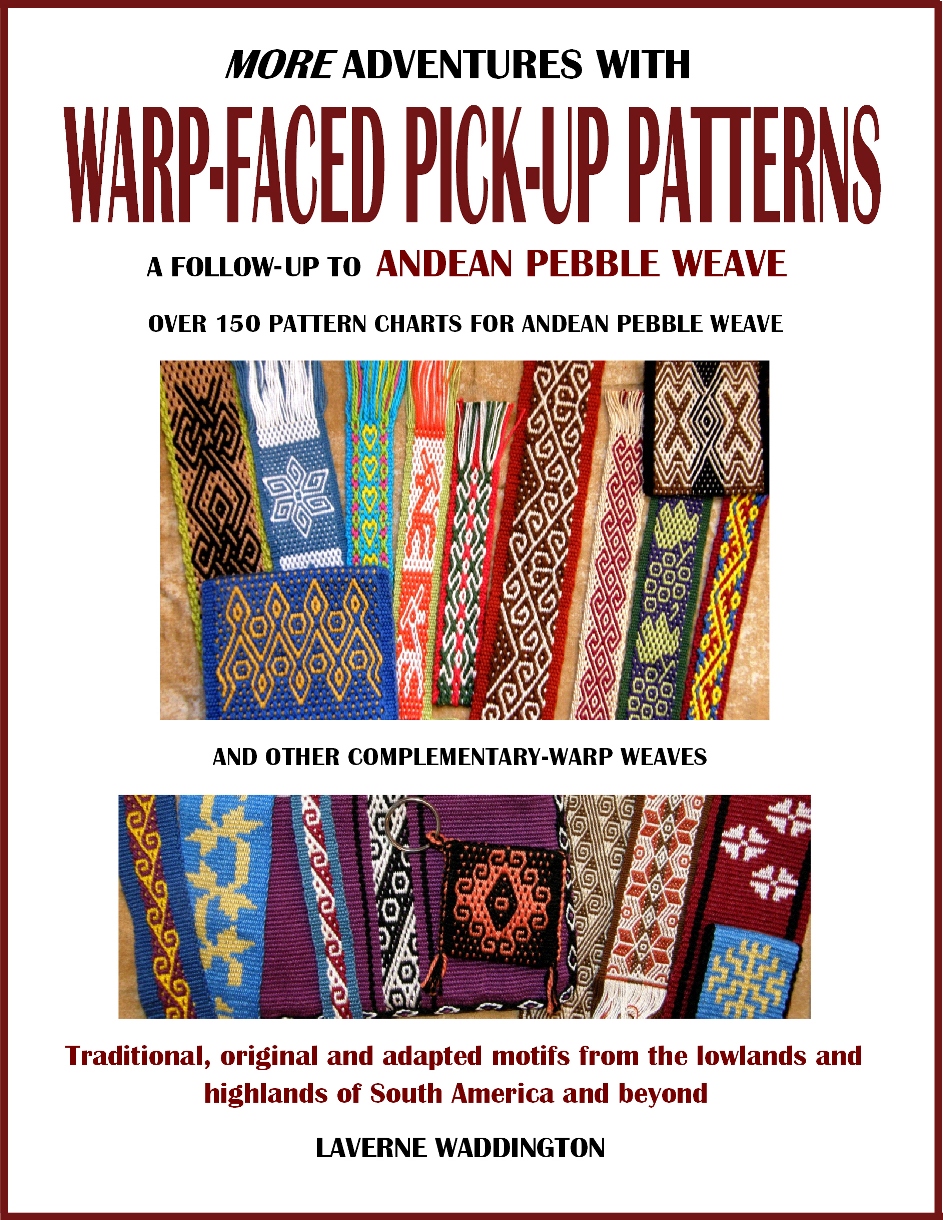
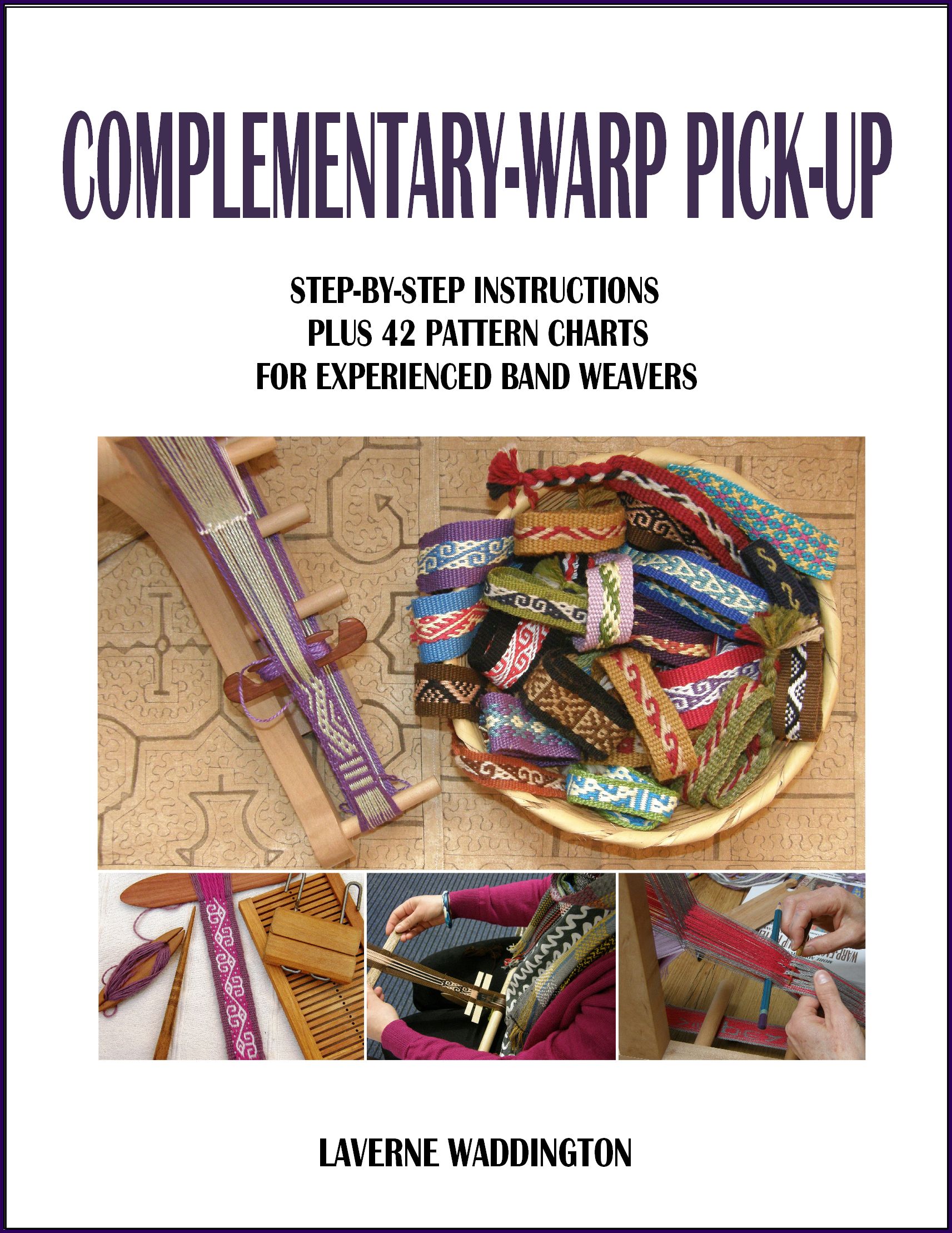
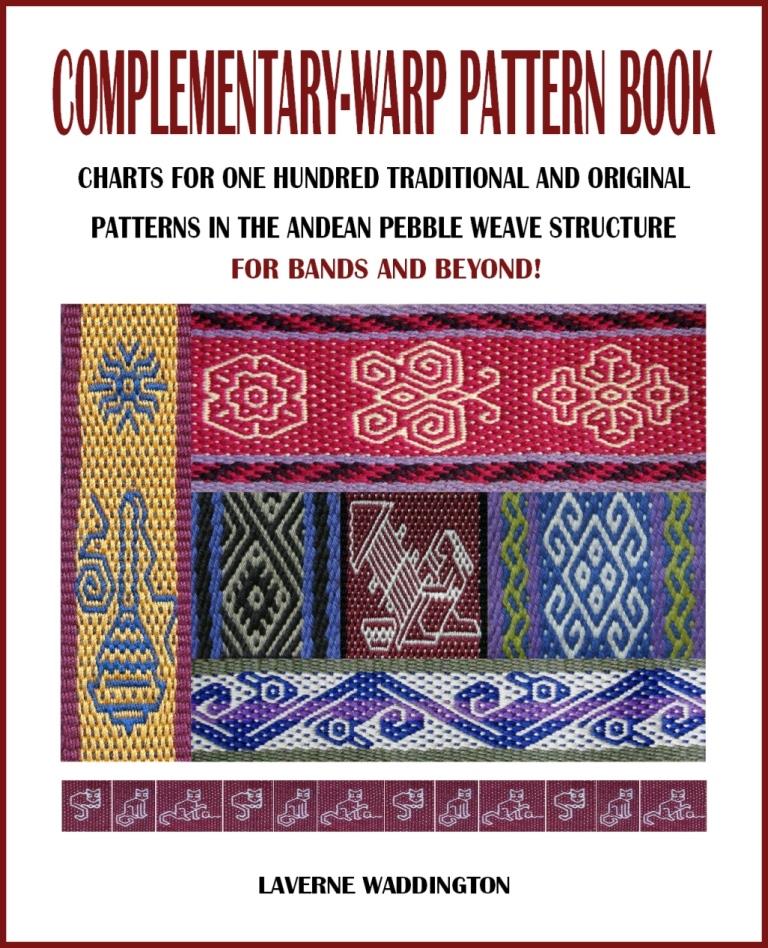
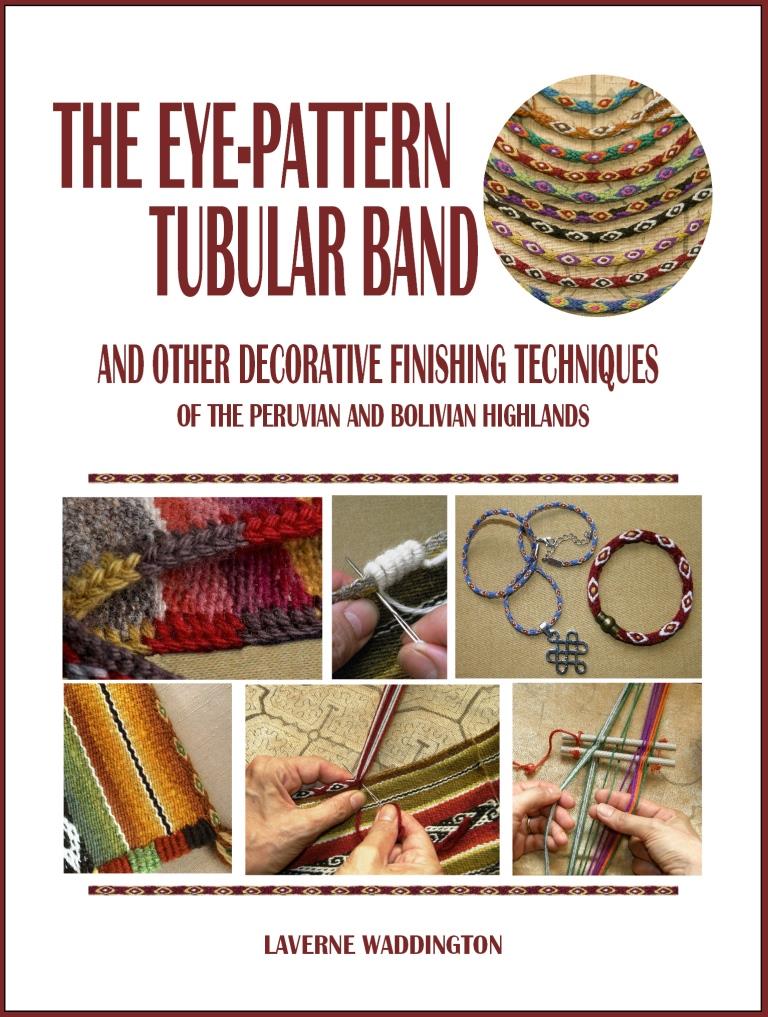
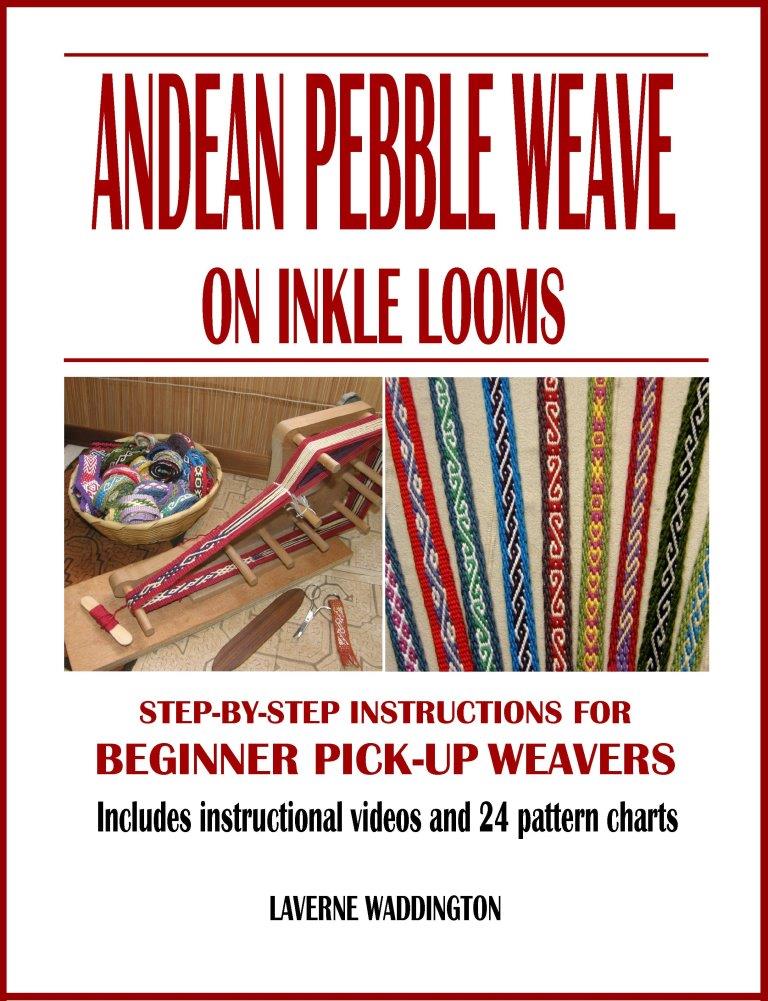


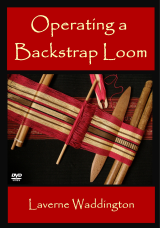
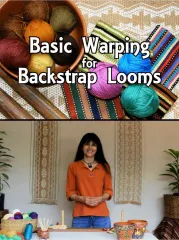

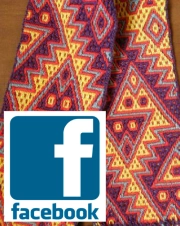





[…] Tutorial-cross knit looping Posted by: lavernewaddington | March 5, 2010 […]
By: Backstrap weaving-cross knit looping tutorial and ikat. « Backstrap Weaving on March 5, 2010
at 2:18 pm
Hi Laverne,
that´s similar to a knitted applied I-Cord, isn´t it? Have to try this, it looks very nice.
Tiia
By: Tiia on March 5, 2010
at 3:22 pm
Hi Tiia,
You know, I didn’t know what an I-cord was so I watched a Youtube video. The main difference is that wiith the cross knit looping, the edge of your woven piece gets embedded within the three rows of knit stitches and so gets completely covered from both sides. I’m guessing that if you sewed an I-cord onto an edge it would just kind of sit on the edge. I read some suggestions for using the I-cord for applique work-that sounds like a nice idea.
By: lavernewaddington on March 5, 2010
at 9:20 pm
Yes you are rigth! Shouldn´t read posts like that while half asleep, I didn´t look at the last pics where you folded the cardboard. The applied I-Cord is just connected where you pick up the stitches and looks different as well.
The I-cord looks very nice as applique work. I saw a book on amazon just a few days ago and on the cover was a bag with celtic pattern appliqued with I-cord. Very nice! Unfortunately I can´t find the link again.
There are so many things to try out. Can´t wait to finish my thesis and have some spare time.
By: Tiia on March 7, 2010
at 11:51 am
You weren’t half asleep Tiia! I added those photos later so that things would be clearer. I am glad you came back to take anoher look 🙂
By: lavernewaddington on March 7, 2010
at 12:42 pm
Nice finishing stitch. Just so I’m clear, this is done with a big needle with eye, like a cross stitch needle, or with a knitting needle?
Have a good day!
By: franco rios on March 5, 2010
at 8:08 pm
It’s done with a sewing needle, Franco- a needle with an eye-or anything that will serve to pull the thread through the Xs. In fact, I didn’t use a needle at all with the leather as I didn’t have one with a large enough eye. I gave up trying to thread it! That leather is rather thick. Fortunately the leather was quite stiff and so I could just poke it under the Xs and through the holes in the card on it’s own.
By: lavernewaddington on March 5, 2010
at 9:02 pm
I’m so excited about this! Thank you SO MUCH for the tutorial! I tried it a bit today on some cardstock, and I’m going to practice some more before I attempt to use it on any of my weaving.
I had a question. Is the middle stitch “in” anything? Is it on the very very edge of the fabric/weaving? Or only the first and last stitch actually in/through the fabric?
Just trying to think about how it transfers to joining two pieces together. I’ll have to try it out and practice it. 🙂
Thank you again! I love the look of this, and you explained it so well!
By: Tara on March 6, 2010
at 12:58 am
Hi Tara,
That was quick!-you have already tested it out.
You said that you have already tried it out flat on a piece of card. Now you can try again sewing your first 3 Xs on a flat piece of card and then fold the card so you can pretend that it is two pieces of fabric that you want to join and edge. Don’t fold it sharply-just bend it in half so the the middle X is sitting on the edge. Then you will understand exactly how it works. You will see that when you pass the needle through the card, you are joining the two layers together. The middle X just sits there on the edge joined to the other two stitches.
By: lavernewaddington on March 6, 2010
at 1:45 am
I’m confused about starting if I want to edge a piece of handwoven fabric … would it be a good idea to make three cross-stitches in the corner to start the edging (just want to cover one cut edge, not join any pieces). If I used the same handspun wool it could be very bulky … but the knit pieces shown look like it squashes out after pressing.
By: Betty on March 6, 2010
at 7:12 pm
It is bulky, Betty and doesn’t flatten out after pressing. Imagine a tubular cord that has been slit and your edge has been inserted within. That is what it is like.
I learned single cross knit looping in Peru to edge the cradle of Andean slings and I could do a tutorial on this next week if you like. It is a lot less bulky. I was taught to work it in two colors and it is also very pretty.
If you want to edge a piece of fabric you start by sewing the three Xs at the left end of your edge. Imagine the piece is on your lap right side up. The first X will be sewn on the wrong side, the second will span the edge (the center of the X will be right on the edge)and the third will be on the right side. I have only used this on selvedges of woven fabrics- not on cut raw edges- and the edge of knitted pieces.
By: lavernewaddington on March 6, 2010
at 7:30 pm
Laverne, this is an easy and clever way to “fix” edges and make them pleasing. I’ve been weaving shawls on the RH loom and need an edge.
Thanks!!
By: Denise on March 13, 2010
at 2:09 pm
You are welcome. I have never used it on something like a shawl that has a lot of drape. I suspect you would need to do it with a fine yarn and keep it quite loose. My experience with it has been on warp faced textiles.
By: lavernewaddington on March 13, 2010
at 2:40 pm
That’s what I was thinking – thin and loose.
RH tends to have messy selvages. Something that would encase the edges with a slightly decorative edge without taking away from the weaving.
I am learning!
By: Denise on March 13, 2010
at 4:14 pm
Love this edging. I generally work cross-knit looping in the round for things like bags. Lots of wheels turning in my head — thanks!
By: Donna Kallner on April 3, 2010
at 7:10 pm
Cross knit looping in the round….I would love to see that.
By: lavernewaddington on April 5, 2010
at 10:04 pm
Sure thing — I just posted a link to you and images of cross-knit looping in the round at Two Red Threads — http://donnakallner.blogspot.com/2010/04/cross-knit-looping-on-edge-and-in-round.html
By: Donna Kallner on April 6, 2010
at 1:27 am
This makes a very handsome edge and I would love to try it on a card and eventually on some weaving. Please let me know how I could obtain a printout of your directions. I have dial-up, so I don’t get to see most the images, and I note that copying even the text is blocked. I could go to the library and download a copy with images if there is a way to do that. I would much appreciate your help and would be happy to pay for the instructions. Thanks! — Roz
By: Roz Potter on April 27, 2010
at 2:21 am
I will find a way to email this to you, Roz……
April 27-emailed a pdf to you today.
By: lavernewaddington on April 27, 2010
at 3:19 am
I WOULD LOVE A PDF FILE. THIS IS SOMETHING EVERY WEAVER SHOULD KNOW..I WILL S HARE WITH MY GUILD. THANKS THANKS THANKS
By: ARLEEN on April 29, 2010
at 8:39 pm
Hi Arleen,
Are you not able to download the page?
By: lavernewaddington on April 30, 2010
at 1:04 am
I am just catching up with this entry…fabulous! I’m a complete newby to weaving and how to attractively join two pieces of weaving (when I start needing that) has been puzzling me.
By: elizaduckie on August 27, 2010
at 4:35 pm
I used a single version of this on the Vietnamese pieces I just wove so you just sew one “X” and go looping through that. I really like it.
By: lavernewaddington on August 27, 2010
at 4:45 pm
[…] is not knit, at all. This is a needle weaving technique called cross knit looping that I saw on the Backstrap Weaving blog. I was afraid the edge would take a really long time to do but after the first few rows, it […]
By: Weaving | Stitching for Sanity on February 15, 2011
at 9:49 pm
I’ve always wanted to know how this was done. I have seen something similar here in India – just didn’t know what it was called. Thanks for the wonderful and easy-to-understand tutorial.
By: S on May 26, 2011
at 6:54 pm
Oh, wow, that’s nalbinding, of the sort used in the Egyptian Coptic socks that people used to think were some of the earliest known knitting in the world.
See?
By: Naomi (aka gannet on Ravelry) on June 9, 2011
at 10:17 am
That is a great page of instructions. Thanks for the link, Naomi (and Karen Sullivan). I have heard of and always wondered about nalbinding. When I first posted the instructions for cross knit looping someone told me that they would be of interest to nalbinders.
By: lavernewaddington on June 9, 2011
at 1:38 pm
Hi Laverne,
I recently joined Ravelry and know you as Warmi. I’ve been working my way through your blog posts and when I came across the cross-knit looping I was surprised to see how much it resembles french hitching, an old sailor technique used as a covering for tool handles and water jugs. I know it from Hervey Garrett Smith’s book “The Marlinespike Sailor” originally published in the mid 1950s. It’s worked from a base string around the object to be covered and provides a non-slip grip and padding for glass bottles. Amazing how so much of what we do is related!
By: Clayton McDaniel on March 11, 2012
at 6:07 pm
Hi Clayton. Nice to meet you and thanks for the interesting comment. I must google french hitching and see if any images come up. I imagine something like this would look really attractive on a bottle apart from being very practical.
By: lavernewaddington on March 11, 2012
at 6:33 pm
[…] seam that connects side panels to the base. I learned this application for cross-knit looping from Laverne Waddington. This and many other uses of cross-knit looping are included in my new eCourse, which begins […]
By: 5-Panel Project Bag — Knitting + Crochet + Looping | Donna Kallner Fiber Art on April 9, 2013
at 7:06 pm
Thank you for this tutorial! This is exactly the kind of edging that was used on my grandmother’s shepherd bag from Dalmatia and I really wondered how it was done because to me it seemed like a very complicated braiding. I am very much into sling making and I thought about using this technique as a sling reinforcement even before you mentioned that it actually is used for that purpose. It would be really great if you would do a tutorial on those edgings!
Thanks again, this site is a great resource!
By: Sime on October 13, 2013
at 6:11 am
Hello again! For doing the single cross-knit loop to join two pieces, does it matter how long the “legs” are? Also, just so I’m clear is it: make the first “x”, come up in the top of the next row, go thru the first “x”, then down at the bottom?
I’d love some pics for that, as I’m trying to make a bag for my Mom.
Thanks,
Amanda
By: Amanda Cluxton on May 8, 2015
at 3:01 am
You decide the length of the ‘legs’. I connect the two pieces here and there with small stitches just to get everything stabilised and then o the loop stitch on top.
By: lavernewaddington on May 9, 2015
at 12:55 am
Thank you, thank you! Really love the effect of this. I am thinking of pulling a thread to guide my needle on the “through to the other side” stitch. That will mean I can use a blunt tapestry needle when hemming my handwoven. And I found that my edging looked nicer when I got comfortable with it and relaxed my stitch tension.
By: yarngoddess on July 14, 2019
at 4:46 pm